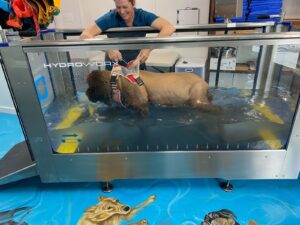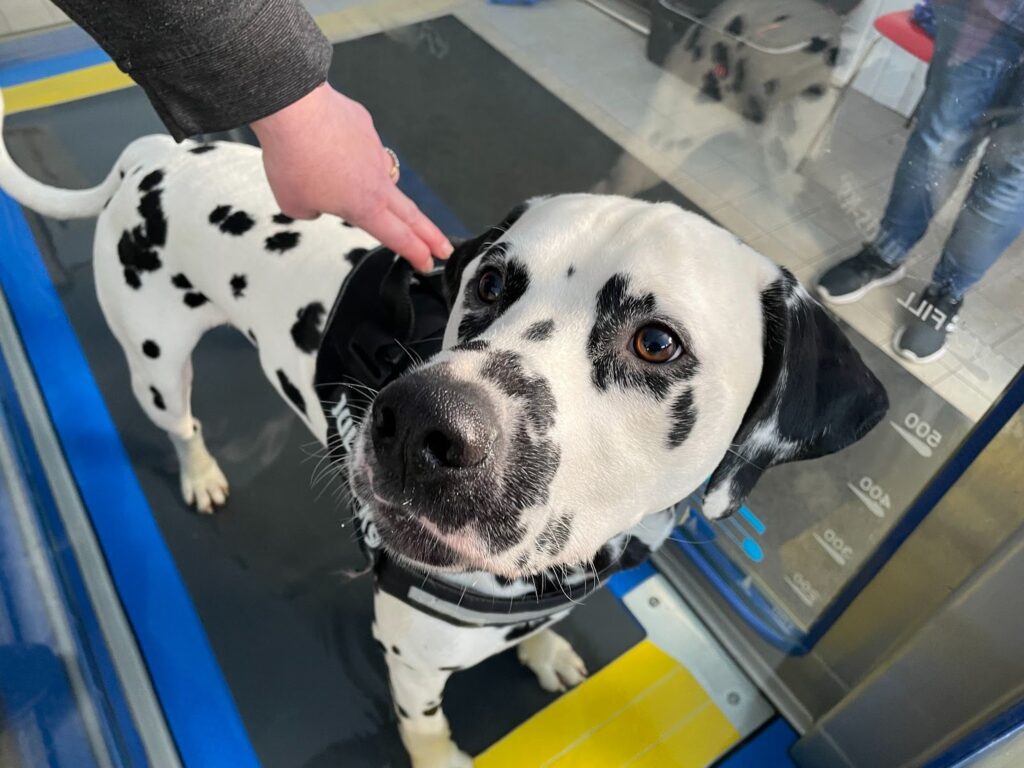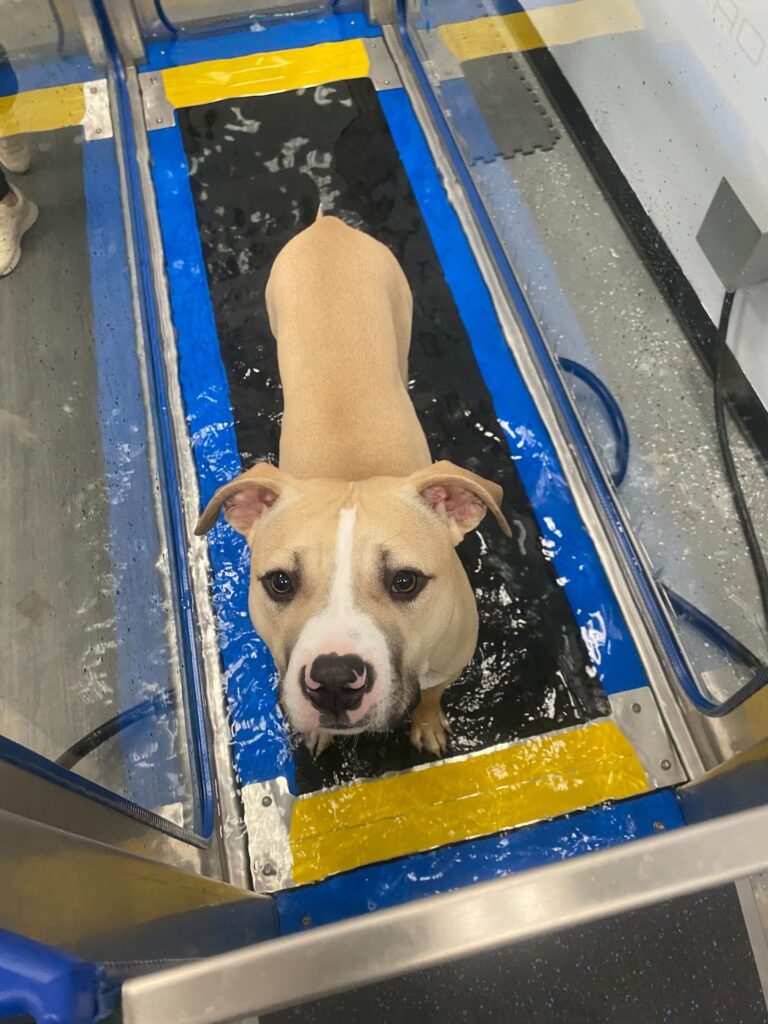5 Applications for Canine Hydrotherapy
Canine hydrotherapy has been making waves in veterinary clinics across the country, because the properties of water provide a versatile treatment option. Before we dive into treatment applications let’s review what hydrotherapy is.
What Is Hydrotherapy?
hy·dro·ther·a·py
/ˌhīdrōˈTHerəpē/
Uses aquatic environments such as pools and underwater treadmills for rehabilitation, recovery, or conditioning. The therapist utilizes buoyancy and resistance to aid in the healing and strengthening process.
You may have heard about the applications of hydrotherapy in professional athletics, or in human physical therapy, but did you know that aquatic therapy is growing in popularity among veterinary practitioners? Product innovations such as the HydroWorx K900 have made hydrotherapy accessible to practices of any size.
Keep reading to learn five everyday applications for canine hydrotherapy.
Canine Hydrotherapy Applications
1. Post-Surgical Rehabilitation:
Hydrotherapy provides a gentle and low-impact way to safely rebuild muscle strength, range of motion, and joint flexibility without imposing strain on the surgical site. The buoyancy of water allows the clinician to control patient weight-bearing enabling patients to begin rehabilitation sooner, and with more comfort. Lower water levels increase weight-bearing, while water levels around the neck of the patient can decrease weight-bearing up to 38%, allowing for a gentle re-entry into mobility after an operation.1
Life vests with a handle harness allow for the practitioner to provide support from above to stabilize the patient during exercise. For post-surgical rehabilitation water temperatures should be adjusted to 83 to 88 °F to support tissue relaxation, decrease pain, and improve circulation.1

2. Weight Loss:
Canine obesity is one of the primary causes of downstream conditions such as arthritis, heart disease, and metabolic abnormalities. In 2019 AAHA reported that 51% of adult canine patients seen were classified as overweight.
For both obese and overweight patients hydrotherapy is often more comfortable than walking on land. The buoyancy of the water can reduce strain on joints and allow patients to shed pounds without being slowed down by pain. As patients lose weight the exercise routines can be adjusted to add speed, incline, and jet resistance. Hydrotherapy is also a great exercise option for the winter-months if you live somewhere that gets a lot of snow.
Games such as fetch make hydrotherapy workouts fun!
3. Conditioning for Canine Sports:
For canine athletes hydrotherapy can help with two key factors: injury prevention, and keeping athletes in shape during non-competition times. Practitioners combine resistance, incline, speed, and water levels to create challenging endurance exercise programs that keep canine athletes in tip-top-condition. Keeping muscles strong and endurance high can lower the incidence of sport-related injury.

4. Improving Mobility for Orthopedic Patients:
Dogs suffering from orthopedic conditions such as hip dysplasia or arthritis often experience pain and limited mobility. Hydrotherapy can be added to existing treatment protocols (NSAIDs, laser therapy, shockwave therapy, etc.) to keep patients at a healthy weight, to improve mobility, and to strengthen surrounding muscle structures.

5. Rehabilitation for Neurological Conditions:
Neurological conditions such as spinal injuries or paralysis are notoriously difficult to rehabilitate. Life vests with a harness help practitioners support patients as sensory nerves are stimulated. During rehabilitation sessions with these patients, practitioners often also move the patient’s limbs through a normal range of motion to stimulate motor neuron memories and proprioception.3
Hydrotherapy is often used for these top neurological conditions:
- IVDD
- Degenerative Myelopathy
- Tendon and Ligament Injuries
- Chronic Osteoarthritis
Making Hydrotherapy Accessible to Veterinary Practices: Meet The HydroWorx K900
HydroWorx’s K900 underwater treadmill fits into small spaces and has been specifically designed to meet the rigors of veterinary practice. The K900 includes:
- Variable speeds from 0.2 to 7 mph
- Adjustable water depth from 1” to 24”
- Water temperature controls
- Ramps for easy entry and exit
- 360-degree patient visibility
- Powered incline
- Jets for resistance or massage
Ready to add hydrotherapy to your veterinary clinic?
The HydroWorx team is here to answer all your questions.
References:
1 https://www.dvm360.com/view/a-closer-look-at-hydrotherapy-for-rehabilitation
2 https://www.aaha.org/publications/newstat/articles/2020-02/pet-obesity-is-an-epidemic/

